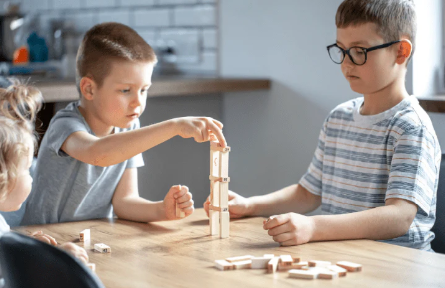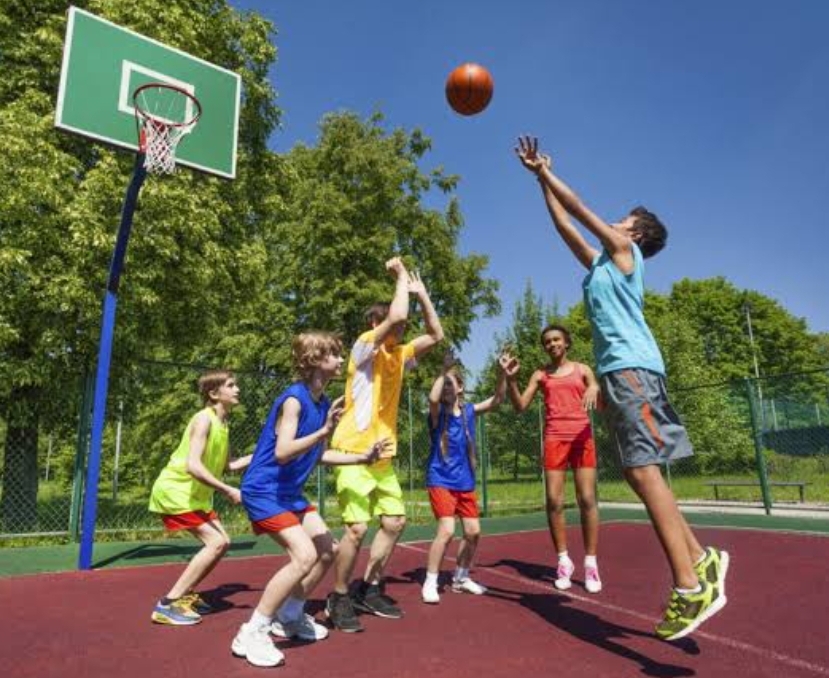
Schools are meant to be more than just places of learning – they’re hubs of social interaction and growth. But fostering a strong sense of community within a school can feel like a daunting task. Fear not, educators and parents alike! Today’s post tackles your burning questions on building a vibrant school community, making learning a truly enriching experience for everyone.
Question 1. “My classroom feels isolated – any tips for fostering connections within the four walls?”
Absolutely! Here are some ideas to spark connection within your classroom:
Community Circles: Start your day with short, facilitated discussions where students share their experiences and feelings. This fosters trust and allows classmates to get to know each other on a deeper level.
Collaborative Learning Activities: Move beyond solo projects and embrace the power of teamwork! Design activities that require students to work together, solve problems, and celebrate their combined successes.
Student-Led Activities: Empower your students by giving them opportunities to lead discussions, presentations, or even classroom games. This builds confidence and allows them to showcase their unique talents.
Question 2. “How can we get parents more involved in the school community?”
Parental involvement is crucial for a thriving school community! Here’s how to bridge the gap:
Open Communication Channels: Utilize newsletters, social media, and regular updates to keep parents informed about school events, curriculum changes, and opportunities to get involved.
Volunteer Opportunities: Create a variety of volunteer opportunities for parents, both within the classroom (e.g., guest speakers) and around the school (e.g., lunchroom helpers, gardening projects). This allows parents to connect with teachers and directly contribute to the school community.
Parent-Teacher Conferences Beyond Grades: Transform parent-teacher conferences into collaborative dialogues. Discuss student progress, not just grades, and address any concerns or challenges together.
Question 3. “Our school feels very cliquey. How can we promote inclusivity?”
Combating cliques requires a multi-pronged approach:
Team-Building Activities: Organize school-wide or grade-level activities that encourage students from different social circles to interact and collaborate. This could involve games, talent shows, or community service projects.
Diversity Celebrations: Plan events celebrating the diverse backgrounds, cultures, and talents of your student body. This fosters inclusivity and allows students to appreciate the richness of their community.
Mentorship Programs: Implement peer mentorship programs where older students can guide and support younger students, fostering a sense of belonging and connection.
Question 4. “We have a large student body – how can we ensure everyone feels included?”
Feeling like a valued member of a community is essential, especially in larger schools. Here’s how to create a sense of belonging:
House Systems: Divide the student body into smaller “houses” that participate in friendly competitions and activities. This fosters a sense of team spirit and allows students to build connections beyond their immediate classmates.
Buddy Systems: Pair older students with younger students as buddies. This can provide younger students with a friendly face and a sense of belonging, while promoting leadership skills in older students.
Student Recognition Programs: Recognize and celebrate the achievements of students not just in academics, but also in leadership, sports, arts, and community service.
Question 5. “How can technology be used to build a stronger school community?”
Technology can be a powerful tool for fostering connections:
Online Collaboration Platforms: Utilize online platforms for students to work on projects together, even outside of school. These platforms allow for asynchronous communication and can provide a space for students to share ideas and resources.
School Social Media Pages: Maintain a well-curated school social media page to share school events, student achievements, and community updates. This keeps parents and students engaged even outside of school hours.
Virtual Cafeteria App: Consider a virtual cafeteria app where students can connect with friends from different grades during lunch breaks, fostering interaction beyond their immediate social circles.
Question 6. “How can we create a sense of community across different grade levels?”
Building bridges between different age groups strengthens the school community as a whole. Here are some ideas:
Mentorship Programs: Expand your mentorship programs to connect older students with younger students across grade levels. This allows younger students to receive guidance and support, while older students develop leadership skills and a sense of responsibility.
Buddy Reading Programs: Pair older students with younger students for buddy reading programs. This fosters literacy development in younger students while promoting positive interactions across age groups.
School-Wide Events: Organize events that involve students from all grade levels, such as school plays, talent shows, or community service projects. This allows students to interact, collaborate, and celebrate each other’s talents.
Question 7. “Student well-being is paramount. How can we create a community that supports it?”
A strong school community prioritizes student well-being. Here’s how to cultivate a supportive environment:
Social-Emotional Learning (SEL) Programs: Implement SEL programs that teach students valuable life skills like self-awareness, communication, and conflict resolution. These skills empower students to navigate challenges, build healthy relationships, and thrive within the school community.
Mental Health Awareness Initiatives: Organize workshops or presentations to raise awareness about mental health and provide resources for students who may be struggling. This fosters open communication and creates a safe space for students to seek help when needed.
Peer Support Programs: Establish peer support groups or programs where students can connect with others who may be facing similar challenges. This can provide a sense of belonging and support for students dealing with issues like anxiety or stress.
Question 8. “Creating a culture of respect – any tips for addressing bullying and promoting kindness?”
A culture of respect is the cornerstone of a strong school community. Here’s how to tackle bullying and promote kindness:
Clear Anti-Bullying Policies: Establish clear and well-communicated anti-bullying policies that outline expectations for respectful behavior. This sets a strong foundation for a safe and inclusive learning environment.
Bystander Intervention Training: Equip students with bystander intervention skills. Teach them how to recognize bullying, speak up for their peers, and report incidents to trusted adults.
Kindness Initiatives: Launch school-wide kindness initiatives that encourage students to perform acts of service and kindness for their peers. This could involve creating a “compliment wall” or organizing a “random acts of kindness” week.
Question 9. “How can we get teachers more involved in the school community beyond the classroom?”
A vibrant school community thrives when teachers feel connected and supported. Here are some ways to foster teacher engagement:
Teacher Collaboration Time: Schedule dedicated time for teachers from different grade levels to collaborate, share best practices, and support each other.
Professional Development Opportunities: Offer professional development opportunities focused on building community within classrooms and schools.
Teacher Recognition Programs: Recognize and celebrate the achievements of teachers, not just in terms of academic performance but also for their efforts in fostering a positive and inclusive learning environment.
Question 10. “Building a strong school community feels like a continuous effort. How can we keep the momentum going?”
Fostering a strong school community requires ongoing dedication, but the rewards are immeasurable. Here are some tips to maintain momentum:
Regular Communication: Maintain regular communication with parents, students, and staff about community-building initiatives and their impact.
Celebrate Successes: Take time to celebrate successes, both big and small, in creating a strong school community. This reinforces the importance of these efforts and motivates everyone to keep contributing.
Seek Feedback: Continuously seek feedback from students, parents, and staff to identify areas for improvement and ensure that everyone feels included and valued within the school community.
Remember, building a strong school community is a journey, not a destination. By working together, with a shared vision and commitment, we can create schools that are not just places of learning, but thriving hubs of connection, support, and well-being for all! We hope this Q&A series has empowered you with valuable strategies.
Do you have any questions or success stories to share about building a strong school community? Let’s keep the conversation










